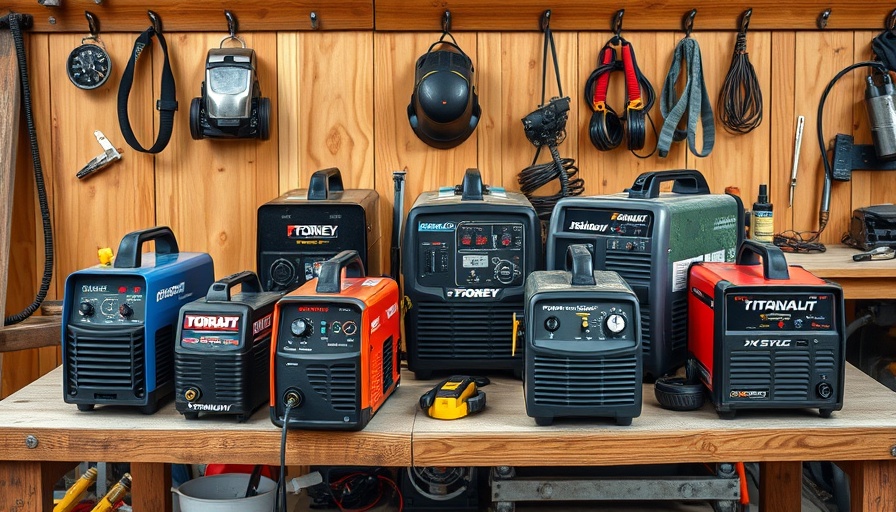
Unpacking the Essentials: Importance of Choosing the Right Welder
For those taking their first steps into the world of welding, making an informed decision on the type of welder to purchase can feel overwhelming. With the rise in popularity of DIY projects and home improvements, understanding the capabilities and limitations of different welding machines is crucial. Each type, whether it's a MIG (Metal Inert Gas), TIG (Tungsten Inert Gas), or Stick welder, offers unique advantages that can cater to specific needs and skill levels.
MIG Welding: A Beginner’s Best Friend
MIG welding is often recommended for beginners due to its user-friendly nature. It utilizes a continuous wire feed that allows for smooth and quick welding. Ideal for projects that require speed and efficiency, MIG welders can tackle a variety of materials, including both thin and thick metals. This type of welding machine is perfect for general-purpose tasks like automotive bodywork and light fabrication.
Understanding TIG Welding: Precision at its Core
While TIG welding may present a steeper learning curve due to its precise technique, the level of control it provides makes it an attractive option for those pursuing more intricate projects. Particularly suited for thin materials and demanding applications such as aircraft or artistic metalwork, the TIG process involves using a non-consumable tungsten electrode and requires an understanding of arc stability and heat management.
Stick Welding: The Versatile Warrior
Stick welding presents a more traditional approach, suitable for heavy-duty projects and outdoor work. It is less sensitive to external factors such as wind, making it a common choice for construction sites. Beginner welders appreciate Stick welding for its accessibility in terms of both equipment and repair work.
Identifying Key Features and Benefits of Top Beginners’ Welders
When selecting a welder, there are essential features to consider. Look for machines that offer adjustable voltage settings to control heat input, built-in safety features like thermal overload protection, and a clear instruction manual to ease the learning process. Additionally, portability and ease of use contribute significantly to a beginner’s experience.
Consulting Experts: What Professionals Recommend
According to expert welders, the choice of welder should align with the specific projects the user intends to undertake. They argue that investing in a slightly higher-end model with more functionality can provide better long-term value and learning experience. Moreover, having access to ample online resources and community support can greatly enhance the learning process.
Future Trends in Welding Technology: Staying Ahead
As technology evolves, it's fascinating to observe how advanced features are being integrated into welding machines. Features such as digital displays, improved feed mechanisms, and better user interfaces are transforming the landscape. Welding professionals are encouraged to stay abreast of these innovations to enhance productivity and safety standards.
The Emotional Journey of New Welders: Finding Your Passion
Many beginners find welding to be a therapeutic outlet that sparks creativity and builds confidence. The tactile nature of the work allows users to see immediate results from their effort, which can be deeply satisfying. Whether building furniture, creating art pieces, or repairing items around the house, welding offers an empowering experience.
Wrapping Up: Key Takeaways for Aspiring Welders
As you explore the prospect of diving into welding, consider starting with a MIG welder to ease the transition. Research various models and functionalities to find one that resonates with your intended use and skill level. With practice, patience, and a commitment to learning, you will not only improve your welding skills but also expand your creativity and project possibilities.
Get started on your welding journey today with the right equipment and support! Explore various models, features, and expert advice to make the most of your welding experience.
 Add Row
Add Row  Add
Add 




Write A Comment